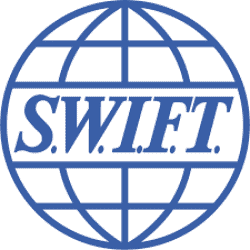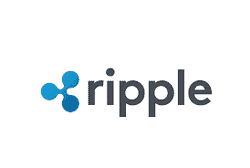The widely discussed technology, some say, will emerge from labs and being in the'proof of concept' stage toto the real world, or what some refer to as “minimum viable products.

Many column inches have been dedicated to blockchain or distributed ledger’s promise of perfect information, updated in real time, reducing the need for reconciliation and greater speed and transparency around financial processes. But corporate treasurers are still waiting for that ‘killer’ blockchain application in the business-to-business (B2B) space to emerge and gain critical mass.
Well, they may not have to wait much longer. “We’ll have a blockchain solution live in a number of months to move cash on a real-time basis,” said Wim Grosemans, head of product management for international payments and local offer for the EMEA region at BNP Paribas. Speaking at a Treasury Lab session on Wednesday at EuroFinance on Blockchain/Distributed Ledger Technology: Expect the unexpected, he said, “Blockchain makes sense for cross-border payments as it can provide a more instant experience.”
BNP Paribas is looking at blockchain solutions in the B2B space for both payments and trade. Approximately 90% of FTSE 100 companies—and similar numbers in the US — are believed to be conducting proofs of concept for non-financial applications of blockchain in their supply chains, for example.
“[Next year] will be a big year for blockchain,” says Ashley Kemball-Cook, business development and product manager at UK blockchain start-up, Qadre. Qadre says it is ready to scale its blockchain for managing trust and identity in a digital world.
Blockchain solutions, which a few years ago, cost half a million to implement, are coming down in price to a level that is affordable for commercial applications.
Although blockchain projects are moving from proof of concept, to “minimum viable products,’ Grosemans says mass adoption requires alignment of protocols and regulators. “There’s no revolution, only evolution,” he says. Kush Patel, CEO of Tallysticks UK, a blockchain-powered solution for supply chain financing, says it is difficult to integrate blockchain applications with bank’s legacy systems, which were designed in the 1990s—some even predate that. He believes corporates will adopt fintech-developed blockchain solutions in a modular fashion for those services that are not being offered by banks.
For corporates pondering where they start with blockchain as an internal project, Grosemans says they need to get together with internal teams and clients and look at what problems distributed ledger technology may be able to solve. “You need to have a vision of where you want to go,” he says.

“Forget about cryptocurrencies [like Etherium and Bitcoin],” says Kemball-Cook, adding that corporate treasurers needed to work with blockchain solutions that are optimized for B2B applications. On Thursday at EuroFinance, Simon Taylor, co-founder and director of blockchain at 11:FS consultancy in the UK, outlined four areas: Trade; the Internet of Things, capital markets and payments and FX; where blockchain proof of concepts are already underway. “Everyone has a different definition of blockchain or distributed ledger technology (DLT),” says Taylor. “It is not fully centralized or decentralized; it is about inter-organizational workflows.”
Some of the blockchain proofs of concept Taylor is most excited about are in the areas of trade and supply chain. He pointed to the Digital Trade Chain (DTC) for small and mid-sized companies, which is being developed by seven European banks and leverages IBM’s Hyperledger Fabric for blockchain. Although there is a lot of hype around blockchain, Taylor says it has the potential to reduce manually intensive paper-based processes and internal fraud, bringing greater visibility to processes and speeding up payments.
The DTC could become reality in 18 months to two years, says Taylor. He also pointed to a project between Maersk and Microsoft to insure ships on the blockchain and R3 Trade Finance, which uses the blockchain to enable shipping companies to prepare and validate shipping details.
SWIFT Vs. Ripple
Last year at EuroFinance in Vienna, Sebastian Rojas, corporate engagement manager for SWIFT’s Global Payments Innovation (gpi) initiative, says there was a lot of talk about blockchain and cross-border payments, but nothing has really come to fruition yet.
Yesterday (Thursday) at EuroFinance’s Treasury Lab, there was a ‘showdown’ between Ripple, a blockchain cross-border payments provider, and financial messaging provider SWIFT in a session on payments innovation.

“Blockchain in cross-border payments is not about finding an alternative to SWIFT,” says Taylor. He says Ripple has rolled out its blockchain solution for cross-border payments to Tier 2 banks, who could potentially use it to offer more attractive payment rates to their corporate customers.SWIFT has proposed a non-blockchain based solution—gpi—for improving transparency and traceability of cross-border payments. “There are still gaps with blockchain technology in terms of identity and security, which is critical for cross-border payments,” says Rojas.
But the aspect Taylor is most excited about with Ripple is the concept of pre-funding networks. “Closed loop financing throughout the supply chain; that’s worth more of a look,” says Taylor. However, he says some believe that Ripple’s solution is not fast or secure enough.

Whilst SWIFT’s gpi, may be “oldie worldie” or less sexy than newer technologies like Ripple, more than 110 banks have signed up to gpi, which went live in January this year. “Transparency in cross-border payments is the game-changer,” says Rojas. “If a bank is holding onto a payment for three days [instead of crediting it to the beneficiary’s account], then the client will be able to see that with gpi.”
Whilst the emergence of fintechs in the payments space has created “healthy competition,” Rojas says banks don’t want to be supplanted by fintechs in cross-border payments, and corporates are reluctant to replace their banks with fintechs.
A survey of 300 treasury professionals unveiled by EuroFinance and SWIFT found that only 8% of treasurers currently use alternative payment providers for their cross-border payments. More than half of companies surveyed said they had no plans to implement fintech solutions with their biggest concerns being security and fraud prevention. However, SWIFT is not writing off blockchain technology altogether. Rojas says it is conducting a blockchain proof of concept for reconciliation of nostro and vostro accounts, which are used to settle cross-border payments between correspondent banks.
Blockchain also has the potential to transform capital markets, says Taylor, by introducing greater straight-through processing to the derivatives market, for example, where processes are still largely manual and antiquated.
The Depository Trust and Clearing Corporation in the US, which provides post-trade clearing and settlement services, is also set to go live in the first quarter of next year with a blockchain platform for credit default swap reporting.



